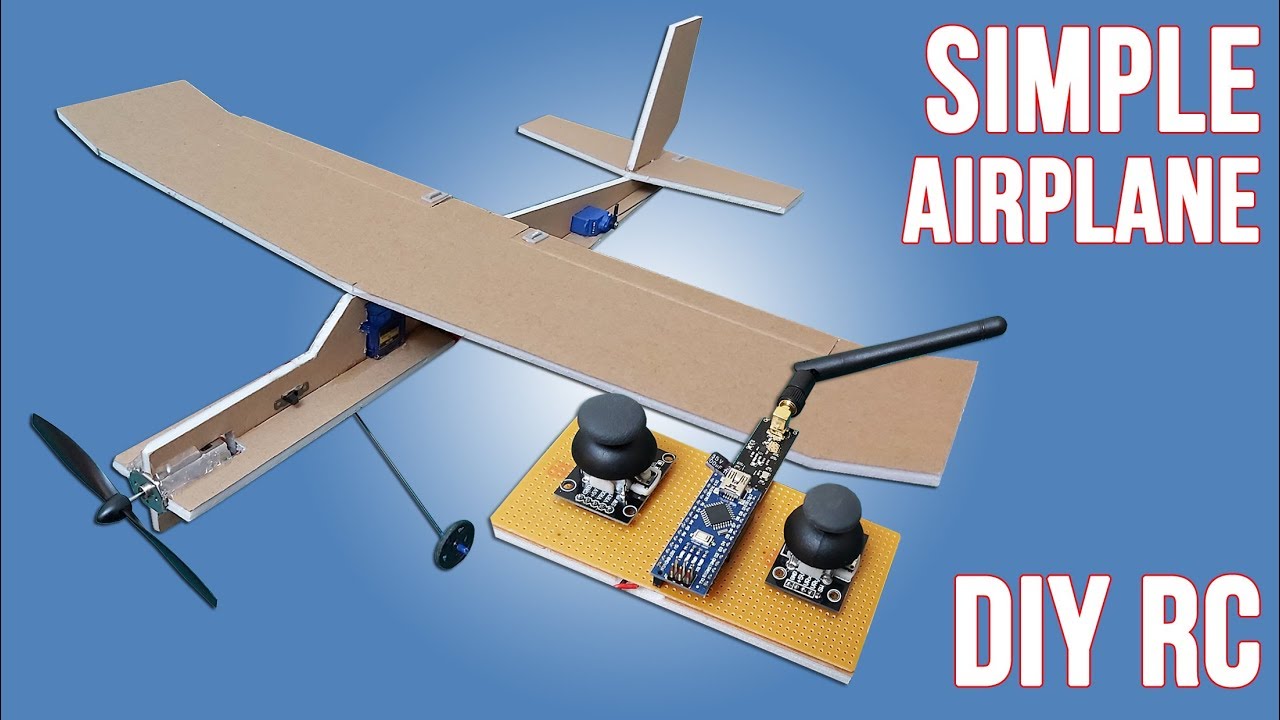Building a remote control plane is not just a fun project; it's also a fantastic way to delve into the world of aerodynamics and engineering. Whether you’re a beginner or someone with more experience, creating your own RC plane can be an exhilarating experience that combines creativity with technical skills. In this tutorial, we’ll guide you step-by-step, ensuring you have all the information you need to get your plane soaring through the skies. So, grab your materials, and let’s dive into this exciting DIY adventure!
Materials Needed

Before you start constructing your remote control plane, gathering the right materials is crucial. Here's a comprehensive list of what you’ll need:
- Foam Board: Lightweight and easy to cut, foam board is perfect for making the body of your plane.
- Electric Motor: A brushless motor is often recommended for better performance and efficiency.
- Electronic Speed Controller (ESC): This device controls the speed of your motor and is essential for your plane's functionality.
- Battery: A Lithium Polymer (LiPo) battery provides the necessary power. Choose a battery that matches your motor's requirements.
- Remote Control Transmitter and Receiver: A 2.4GHz system is commonly used for reliable communication between you and your plane.
- Servos: These will control the plane's ailerons, elevator, and rudder for maneuverability.
- Propeller: Select a propeller compatible with your motor for optimal thrust.
- Glue (Hot Glue or CA Glue): To securely attach parts together, ensuring your plane is sturdy.
- Scissors or a Craft Knife: For cutting materials precisely to shape.
- Ruler and Marker: Essential for measuring and marking your foam board.
Having all these materials on hand will set you up for success as you embark on this exciting DIY journey!
Also Read This: Best Remedies to Achieve Clear White Skin Quickly at Home
Step-by-Step Instructions
Building a remote control plane can be an exhilarating project! Here’s a simple breakdown of the process to guide you through each step.
- Gather Your Materials: Before you start, make sure you have all the necessary materials. Here’s a quick list:
- Foam board or balsa wood for the wings and fuselage
- Electric motor
- Propeller
- Electronic Speed Controller (ESC)
- Battery (LiPo recommended)
- Receiver and transmitter
- Control surfaces (elevators, ailerons)
- Glue (hot glue or CA glue)
- Hobby knife and cutting mat
Also Read This: How to Build a Pop Pop Boat: Watch Step-by-Step on Dailymotion
Troubleshooting Common Issues
Even seasoned builders encounter challenges when making a remote control plane. Here’s a guide to troubleshoot some common problems you might face.
| Issue | Possible Causes | Solutions |
|---|---|---|
| Plane Won't Fly | 1. Insufficient power 2. Center of gravity off | Ensure the battery is fully charged and reposition the components to balance the weight. |
| Control Surfaces Not Responding | 1. Incorrect wiring 2. Binding issues | Check all connections and ensure the receiver is properly bound to the transmitter. |
| Plane Tends to Roll or Yaw | 1. Uneven weight distribution 2. Misaligned wings | Reassess the weight distribution and ensure wings are level before flying. |
| Motor Overheating | 1. Incorrect propeller size 2. Faulty ESC | Confirm the propeller size matches the motor specifications, and check for ESC functionality. |
With these steps and troubleshooting tips, you're well on your way to building and flying your very own remote control plane. Happy flying!
Also Read This: Step by Step Guide to Creating Beautiful Wool Flowers with Dailymotion
5. Tips for Enhancing Your Remote Control Plane
Building your own remote control plane is just the beginning! Once you've got the basics down, there are plenty of ways to enhance your creation for better performance, aesthetics, and fun. Here are some tips to take your remote control plane to the next level:
- Optimize Weight Distribution: Proper weight distribution is crucial for flight stability. Make sure to place heavier components, like the battery, towards the front of the plane to prevent tail-heavy issues.
- Upgrade Your Motor: Consider swapping out the stock motor for a more powerful one. This can significantly improve your plane's speed and climbing ability. Make sure to match the motor with the right propeller for optimal performance!
- Enhance Aerodynamics: Smooth out the surface of your plane and consider adding winglets. This can reduce drag and improve lift, making your plane more efficient in the air.
- Experiment with Control Surfaces: Modify the control surfaces (like ailerons, elevators, and rudders) for increased maneuverability. You can even make these adjustable to suit different flying styles or conditions.
- Add LED Lights: For a fun night flying experience, consider adding LED lights. Not only do they look cool, but they also help with visibility during low-light conditions.
Implementing these enhancements can turn your basic plane into a real flying marvel, making every flight an exhilarating experience!
6. Conclusion
Creating a remote control plane is not just about assembling parts; it’s a rewarding journey filled with creativity, learning, and a bit of engineering magic. Whether you’re a beginner or an experienced hobbyist, the satisfaction of seeing your creation take flight is unmatched.
Remember, each plane you build is unique, and the tips we've shared can help you personalize and enhance your flying experience. Don't be afraid to experiment with different materials and designs. The sky's the limit!
So, gather your materials, follow this tutorial, and let your imagination soar. Happy flying!
 admin
admin








